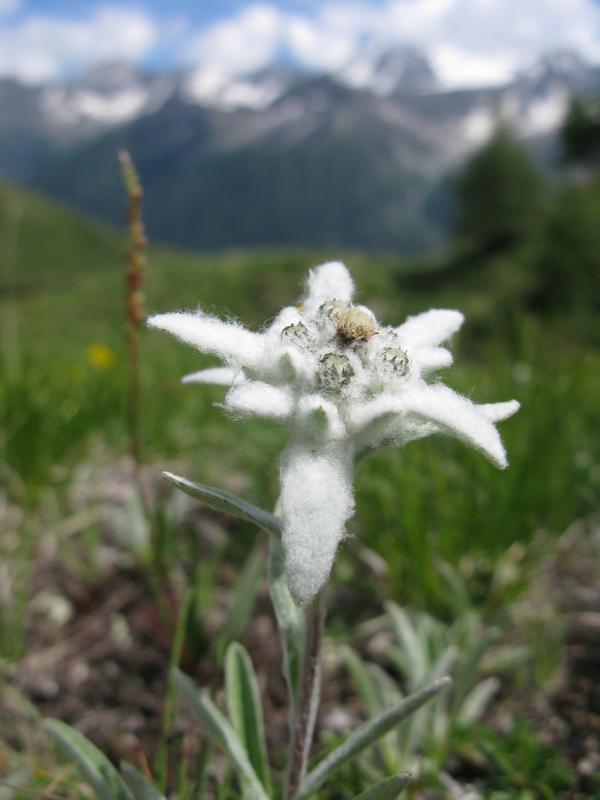Native plant seeds. An essential resource to ecological restoration in Europe

Leontopodium alpinum is an indicator species of calcareous alpine grasslands, and is available from approximately 6% of seed producers across Europe. ph. Emma Ladouceur
Ecological restoration actions – aiming at the recovery of a damaged ecosystem – are increasingly getting global attention and the seed farming of native plant species, which are necessary for these conservation projects, offers interesting possibilities for economic development.
However, the potential of native seed farming may be limited by inadequate knowledge transfer between academic research and the industry and the lack of effective policies that regulate native seed production and use. In order to fully develop the potential of this promising industrial field, a MUSE research study carried out within the NASSTEC project suggests some actions.
Emma Ladouceur, a researcher at the MUSE – Science Museum (Trento, Italy) for the EU project NASSTEC, has recently published an article in “Conservation Letters” (early view), which examines grasslands of the main European biogeographical regions, identifying over 1000 important plant species for ecological restoration actions and finding out that only 32% can be purchased as seed. To be able to reinstate functioning ecosystems seed supply has to be improved.
The new study proposes to substantially expand research and development on native seed quality and production, to increase open-source knowledge transfer between public, private and academic sectors and to create supportive policies intended to stimulate demand for biodiverse seed in Europe.
This study will be presented along with the results of 11 other researchers of the NASSTEC network at the final conference scheduled for late September in London.
NASSTEC PROJECT
NASSTEC (the Native Seed Science, Technology & Conservation Initial Training Network) is a higher education training network developed as Marie Curie action, part of the European Union’s Research and Innovation Programme FP7. The NASSTEC project is coordinated by MUSE with the collaboration of 6 other partners in the UK, Spain and the Netherlands. NASSTEC is training 12 researchers in native seed science, conservation and use, to increase the impact of environmental mitigation and adaptation projects.
The project is interconnecting the public and private sector through the establishment of a multidisciplinary European doctoral ‘school’ with the aim of integrating knowledge in plant ecology, genetics, molecular biology, taxonomy, ecology, conservation, seed biology, environmental science, agricultural botany, crop science, breeding and horticulture.
The final conference of the project entitled “Seed Quality of Native Species: Ecology, Production & Policy“ will take place from September 25 to 29 at the Royal Botanic Gardens Kew in London.
The conference is free to attend and features 10 international experts as keynote speakers. Conference sessions include global perspectives on seed quality for grassland restoration; field-based plant and seed ecology; seed characterization, germination & storage; policy, certification and quality assurance of seed production.
Contact:
PUBLISHED ARTICLE: Reference
Ladouceur, E., Jiménez-Alfaro, B., Marin, M., De Vitis, M., Iannetta, P.P.M., Bonomi, C. & Pritchard, H.W. Native seed supply and the restoration species pool. Conservation Letters. https://doi.org/10.1111/conl.12381
Link: https://doi.org/10.1111/conl.12381
Contact: Emma Ladouceur, emmala@gmail.com
NASSTEC Project: www.nasstec.eu.
Coordinated by: Costantino Bonomi, costantino.bonomi@muse.it
Media Contact
All latest news from the category: Life Sciences and Chemistry
Articles and reports from the Life Sciences and chemistry area deal with applied and basic research into modern biology, chemistry and human medicine.
Valuable information can be found on a range of life sciences fields including bacteriology, biochemistry, bionics, bioinformatics, biophysics, biotechnology, genetics, geobotany, human biology, marine biology, microbiology, molecular biology, cellular biology, zoology, bioinorganic chemistry, microchemistry and environmental chemistry.
Newest articles

NASA: Mystery of life’s handedness deepens
The mystery of why life uses molecules with specific orientations has deepened with a NASA-funded discovery that RNA — a key molecule thought to have potentially held the instructions for…

What are the effects of historic lithium mining on water quality?
Study reveals low levels of common contaminants but high levels of other elements in waters associated with an abandoned lithium mine. Lithium ore and mining waste from a historic lithium…

Quantum-inspired design boosts efficiency of heat-to-electricity conversion
Rice engineers take unconventional route to improving thermophotovoltaic systems. Researchers at Rice University have found a new way to improve a key element of thermophotovoltaic (TPV) systems, which convert heat…



